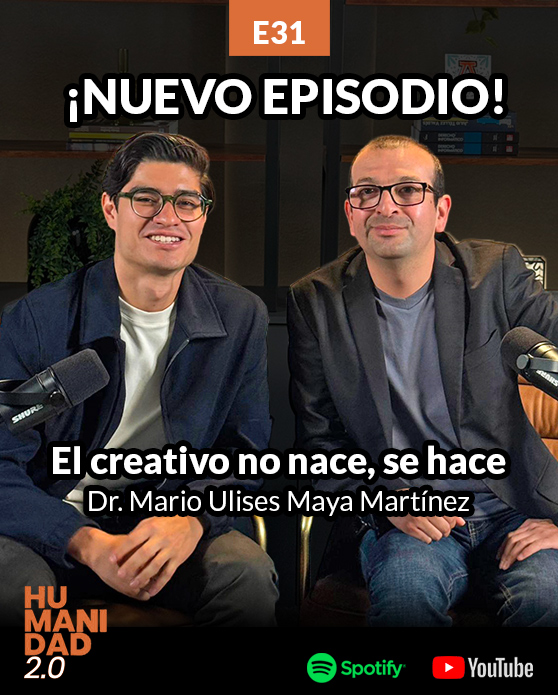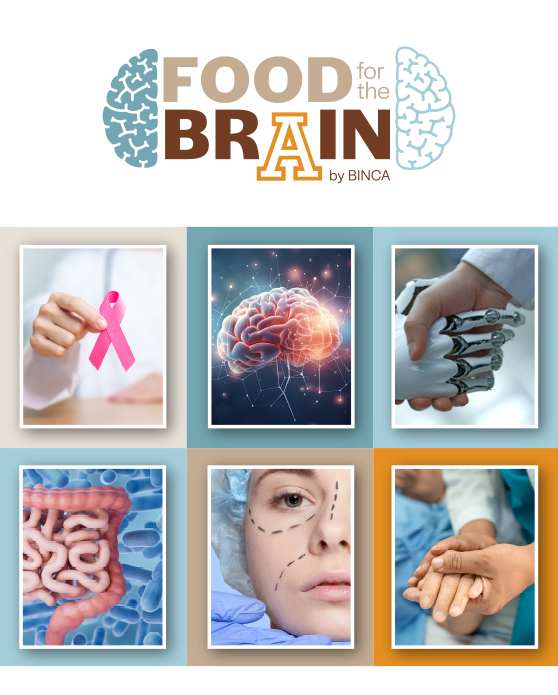
November 5, 2025
Author: Juan Manuel Palomares Cantero
Versión en español
What good is planning when the world changes faster than our decisions? Amid the acceleration and uncertainty that define our era, this question takes on particular urgency. Not long ago, I had the opportunity to take part in a strategic planning exercise with a working team I that was accompanying the institution on whose Board of Directors I serve II. What initially seemed like a technical procedure turned out to be a profoundly ethical experience: the realization that to plan is not only to project the future, but to examine institutional conscience.
Indeed, when undertaken with depth, strategic planning ceases to be an administrative instrument and becomes an ethical act. It is not enough to set goals, measure outcomes, or allocate resources; we must look again at who we are, why we do what we do, and whom we serve by doing it. Planning is an exercise in moral responsibility: it requires discerning ends and means, ordering actions, and orienting every decision toward that which respects human dignity III.
We live in a culture ruled by urgency. Pausing to plan may seem like an unnecessary luxury, but in truth it is a gesture of lucidity. Planning does not slow change, it orders it. It does not delay action, it directs it. An organization that plans with conscience does not seek merely to survive, but to remain faithful to its reason for being.
Planning as an Exercise of Conscience
Can an organization have a conscience? If by conscience we mean the capacity to recognize right and wrong and to act with responsibility and rectitude, then yes: every institution that questions the meaning of its decisions exercises a form of collective conscience. In that sense, strategic planning is far more than a method for organizing tasks; it is the way a community stops to think about who it is, what it believes, and where it must head in order to serve better.
To plan ethically is to understand that every institutional decision has human consequences. No budget, program, or policy is neutral: each always touches concrete lives, shapes cultures, and leaves a mark. That is why planning cannot be reduced to a technical matter or confined to diagrams and indicators. At bottom, it is an exercise in moral discernment: the practical application of the virtue of prudence to organizational life.
Just as personal conscience is formed in the light of principles, values, and transcendent ends, an institution’s conscience is built from its mission and vocation of service IV. Planning, then, is a way of thinking with a wakeful soul: continually asking whether what we do aligns with what we say we are. When that reflection disappears, strategy is hollowed out; when it remains alive, planning becomes a moral compass that guides institutional growth in the service of human dignity V.
Remembering the Essential to Stay the Course
What sustains an organization when everything changes? Not manuals, metrics, or organizational charts, but the invisible substance that gives it meaning: its identity VI. To plan ethically is, first and foremost, to return to what is essential, not to what is superficial or simply urgent, but to the moral core that justifies its existence. In a constantly shifting environment, the most decisive question is not what do we do? but why do we do it?
Every organization is born from an original intuition, from a moment when someone imagined a different way to serve. That founding vocation, often quiet but tenacious, must orient every strategic decision. When it is lost from view, dispersion and improvisation follow, along with moral fatigue. Returning to the essential is an act of ethical memory: recalling the values that gave us origin, the vision that inspires us, and the mission that sustains us VII.
Institutional identity isn’t something you declare; it’s something you enact day in and day out. It is not a slogan or a campaign, but the daily coherence between what is professed and what is practiced. Hence, strategic planning does not oppose the mission; it renews it. Every well-conceived plan is a way of caring for the organization’s soul, ensuring that growth does not carry it away from its purpose but draws it closer to it VIII.
The Ideal Is Tested in Reality
How can we pass from ideal to action without betraying the essential? That is the question every responsible organization must ask. Ethical planning does not settle for merely stating principles; it turns them into concrete decisions. To think strategically is to join the heights of the ideal to the solidity of the real. An institutional vision loses meaning when it remains mere words; it comes to life only when it becomes visible in processes, timelines, resources, and responsibilities.
Planning with one’s feet on the ground does not mean renouncing the moral horizon, but walking toward it with realismIX. It entails recognizing the world’s complexity and human limits without ceasing to steer toward the good. Planning is not control, but balance: maintaining fidelity to purpose without denying the difficulties of context.
Any organization that seeks to serve must understand that its greatest resource is neither economic nor technological, but human. Directors and teams are not mechanical parts; they are communities of people called to collaborate in a shared mission. Strategic realism is not measured in calculations, but in care: caring for the rhythms, capacities, and vocation of those who sustain institutional life X.
To look at reality with lucidity is not to yield to it, but to discern the possible without losing the essential. True realism is born of love for the concrete: for the people, contexts, and projects that make the mission tangible. A planning process that forgets people is emptied of meaning; one that places them at the center turns every plan into a promise of service. Only then can an organization grow without ceasing to be human, be efficient without dehumanizing itself, and be strategic without losing its soul.
The Cost of Failing to Think About the Future
What happens when an organization stops thinking about its future? The first thing it loses is not resources or efficiency, but meaning. Not planning does not merely mean lacking objectives; it means living defensively, reacting to the immediate without horizon or coherence. In this survival mode, decisions fragment, efforts scatter, and the institution’s soul weakens.
The deepest risk of the absence of planning is the loss of the human meaning of work. An organization that seeks only to stay afloat financially or to handle the urgent empties its mission. When profitability or routine displaces reflection, projects are reduced to mechanical tasks, and people become cogs in a purposeless system XI. Planning, by contrast, is a profoundly human act: a way of ordering the future with intelligence, prudence, and hope.
Institutions do not endure because of their size or income, but because of their fidelity to their reason for being. Whoever forgets the mission becomes disoriented; whoever neglects values becomes fragmented XII. Not planning is, at bottom, a renunciation of conscience. Only those organizations that periodically return to their foundations, their origin, purpose, and vocation of service, can withstand the wear of time and remain faithful to the best of themselves: helping people grow and, in so doing, humanizing their own destiny.
Hope Is Also Organized
Every human organization exists to serve. Its ultimate reason is not profitability, but the common good. In that vocation lies its ethical legitimacy. Strategic planning is, at heart, an act of hope: the belief that the future can be built with order, intelligence, and moral rectitude.
Planning is not merely forecasting or administration; it is the care of the meaning of collective action. A conscientious organization takes responsibility for the time it inhabits and the time to come; it knows that every decision leaves a trace and that every structure must be at the service of the person.
Planning is also a space of encounter. It unites leaders and collaborators under a shared purpose. In that dialogue, an active hope is born, where foresight does not contradict faith in the future, but makes it possible.
To endure over time requires more than efficiency; it requires a soul. To plan is to turn ethical intention into structure, ensuring that each institution remains an instrument of humanization. Where hope is organized, the future ceases to be mere uncertainty and becomes a shared task: building, step by step, a more just, more conscientious, and more human world XIII.
Conclusions
To plan with meaning is, ultimately, an act of humanity. Any organization that pauses to think about its future through an ethical lens recognizes that technique is not enough unless it serves the good. Strategic planning is not merely an exercise in foresight; it is a way of safeguarding institutional identity, coherence, and hope. In vertiginous times, returning to the essential, mission, vision, and values, becomes a form of moral resistance to superficiality and urgency. An organization that plans with conscience does not fear the future: it inhabits it responsibly. For when planning is grounded in human dignity, it not only guarantees institutional continuity; it transforms the institution into a space where work, purpose, and service come together to build a more just, more prudent, and more human world.
Juan Manuel Palomares Cantero is an attorney and holds a master’s and doctorate in Bioethics from Universidad Anáhuac, Mexico. He has served as Director of Human Capital, as well as Director and General Coordinator at the Faculty of Bioethics. He is currently a researcher at the Academic Office for Integral Formation at the same university. He is a member of the Mexican National Academy of Bioethics and of the Latin American and Caribbean Federation of Bioethics Institutions. This article was assisted in its drafting by the use of ChatGPT, an artificial intelligence tool developed by OpenAI.
The opinions expressed in this blog are the sole responsibility of their authors and do not necessarily reflect CADEBI’s official position. As an institution committed to inclusion and plural dialogue, CADEBI promotes and disseminates a diversity of voices and perspectives, convinced that respectful and critical exchange enriches our academic and formative work. We value and encourage all comments, responses, or constructive critiques you may wish to share.
1. RedBox Innovation es una empresa mexicana dedicada al diseño estratégico y la innovación aplicada, con sede en Santa Fe, Ciudad de México. Su propósito institucional afirma: “Trabajamos para crear el mejor futuro posible.” Desde su fundación, RedBox impulsa procesos de creatividad, consultoría e inteligencia estratégica orientados a transformar organizaciones mediante la innovación centrada en las personas. RedBox Innovation, 2025. Recuperado de https://www.redboxinnovation.com
2. Peterson Schools son una institución privada, laica y sin fines de lucro, con cuatro campus en la Ciudad de México (Cuajimalpa, Lomas, Paseo y Pedregal), que ofrece educación bilingüe con enfoque internacional desde preescolar hasta preparatoria. Su misión institucional declara: “a community that inspires passion for learning and life.” Colegio Peterson S.C., 2025. Recuperado de https://www.peterson.edu.mx
3. Mitchell, M., Kappen, J., & Culek, C. (2024, March 14). How to write mission, vision, and values statements: 100 examples to help guide you through the process. Bâton Global. https://www.batonglobal.com/post/how-to-write-mission-vision-and-values-statements-with-examples
4. Cochran, D. (2008). A framework for developing an effective mission statement. Journal of Business Studies, 3(1), 1–10. https://jbs-ojs-shsu.tdl.org/jbs/article/download/133/115
5. Harley-McClaskey, D. (2017). Developing human service leaders. SAGE Publications. https://doi.org/10.4135/9781506330389
6. Contreras-Pacheco, O. E. (2022). Mission, vision, and value appropriation: A correlational study. Innovar: Revista de Ciencias Administrativas y Sociales, 32(85), 1–14. https://www.redalyc.org/journal/2250/225075677006
7. Hensmans, Manuel and van Bommel, Koen, Social Movements (July 3, 2017). Available at SSRN: https://ssrn.com/abstract=2996781 or https://papers.ssrn.com/sol3/papers.cfm?abstract_id=2996781
8. Wilson, I. (1992). Realizing the power of strategic vision. Long Range Planning, 25(5), 18–28. https://www.sciencedirect.com/science/article/abs/pii/0024630192902713
9. Slåtten, T., Mutonyi, B. R., & Lien, G. (2021). Does organizational vision really matter? An empirical examination of factors related to organizational vision integration among hospital employees. BMC Health Services Research, 21(1), 483. https://doi.org/10.1186/s12913-021-06503-3
10. Slåtten, T., Mutonyi, B. R., & Lien, G. (2021). Does organizational vision really matter? An empirical examination of factors related to organizational vision integration among hospital employees. BMC Health Services Research, 21(1), 1–15. https://doi.org/10.1186/s12913-021-06503-3
11. Hba, R., Bakkas, A., El Manouar, A., & Janati Idrissi, M. A. (2016). Eco-strategy: Towards a new generation managerial model based on Green IT and CSR. International Journal of Computer Science & Information Technology, 8(2), 1–12. https://doi.org/10.48550/arXiv.1605.03107
12. Thach, E. C. (2002). The impact of executive coaching and 360 feedback on leadership effectiveness. Leadership & Organization Development Journal, 23(4), 205–214. https://doi.org/10.1108/01437730210429070
13. Hunt, N. J. (2025, Spring). A relational approach to workplace leadership [Capstone project, University of New Hampshire, College of Professional Studies]. University of New Hampshire Scholars Repository. https://scholars.unh.edu/msld/144
Más información:
Centro Anáhuac de Desarrollo Estratégico en Bioética (CADEBI)
Dr. Alejandro Sánchez Guerrero
alejandro.sanchezg@anahuac.mx





